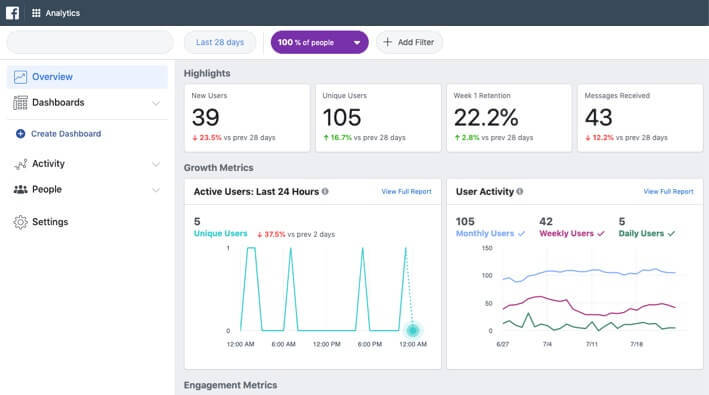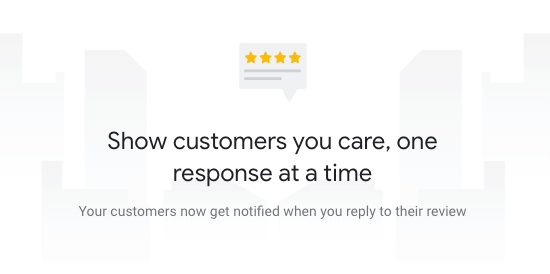In my previous post, we talked about how to decide what key website metrics to track for your business. Now we need to figure out which website analytics tools we need to get the job done.
So, let's look at the 5 must have website analytics tools that are available and what we can track with them.
#1 - Google Analytics
Back in 2005, the folks over at Google purchased a website analytics tool called Urchin Software for an undisclosed sum and later that year, released the product to the public for Free.
Here is what Google’s Director of Engineering, Paul Muret had to say of the acquisition:
"By liberating this tool we could empower companies of all sizes to become smarter and more effective online."
Well, we can safely say Google Analytics has become the best free website analytics tools there is, and has delivered on empowering businesses to become data driven and effective in their online marketing efforts. (source)
So, here are some metics we can gather using Google Analytics:
- Page views
- Unique visitors
- Average time-on-site
- Session duration
- Page depth
- Percent of visitors returning to your blog
- Bounce rate
- Page visits
- Pages per visit
Remember: A good website metrics is one that has a target or goal associated with it.
For example, if you track your blog post 'bounce rate', then you need to look at industry benchmark and say 26-40 percent is excellent and under 55 is average. Our goal to start would be at least in the average range. If the number is above average, it will trigger an action to rectify the issue.
Now there are a lot of other options available to us in Google Analytics, but I want to point out two specific settings for the business types we discussed before - SaaS and E-commerce.
Cross-domain Tracking:
This applies to any businesses using a sub-domain for their business and want to track the flow of user across from each property.
For instance, SaaS businesses usually have their main domain that works as their marketing site and then they have a sub-domain like app.domain.com for the application itself. You would want to configure cross-domain tracking to better track user flow.
Any business using a landing page builder probably has their promotional pages configured on something like offers.domain.com or brand.pagebuilder.com. Again, you would want to look into this cross-domain tracking for these pages.
https://developers.google.com/analytics/devguides/collection/analyticsjs/linker
E-commerce Setting:
Yep, there is a special section that you can enable in Google Analytics to track e-commerce events.
It's a little more involved to get it setup, unless you are using a platform like Shopify that does it automatically for you once you enable the setting in your Google Analytics account.
https://developers.google.com/analytics/devguides/collection/analyticsjs/enhanced-ecommerce
To help track with cross-domain tracking, there is a special setting that you would want to implement when configuring your Google Analytics.
#2 - Facebook Analytics
Now, don't confuse Facebook Analytics with Facebook Insights or Facebook Ad Manager.

Facebook Analytics was released back in 2018 to help you see the entire sales funnel from both organic and paid traffic. The best part is it is also a Free tool, it only requires you to set up your FB pixel on your website and any other page along the customer journey.
With Facebook Analytics, you can gather metrics like
- Purchase
- Initiate checkout
- Add to Cart
- Generate Lead
- View Content
With this tool we can also measure the 'Sharing' metrics of your content
- Number of shares
- Likes
- Number of comments
#3 - Google Search Console
Yes, another must have website analytics tools from Google is the Search Console or the Webmaster tool. This tool allows us to monitor SEO metrics for content performance and engagement.
Metrics we can track through this tool are:
- Links - Number of links to your site factor heavily in your website rankings.
- Rankings/Position of a Page based on Keyword
- Performance of Keywords and Pages - Impressions, CTR
- Mobile Rankings
- Organic Conversion of Goals
- Page Speed/Performance - Again factor heavily in your website rankings.
- Track crawl errors
Bonus: Setup Google My Business to leverage Reviews!
You know how significant a part Social Proof plays in purchasing decisions. Prospects trust what other customers have to say about a business, and if we want to know anything at all, we Google it and why you need Google My Business!

#4 - Hotjar
Hotjar offers "heat maps" that show you visually how users spend their time on your website.
More importantly, Hotjar has built in Polls and Surveys that help you reach out and ASK your users what is important to them and how to improve your product or service.
Here is a great resource to help you setup and use Hotjar
https://www.rich-page.com/cro/the-hotjar-guide-for-improving-your-website-sales-or-leads/
#5 - UTM & URL Shorteners
Actually, the UTM parameters are the main elements that help us track the effectiveness of our campaigns, and we can use the free Google UTM builder to get the job done.
https://ga-dev-tools.appspot.com/campaign-url-builder/
URL Shorteners help manage the UTM and pixels better and can be the "glue" you need to connect all your marketing efforts. Plus, they offer click through metrics to help you better gauge the effectiveness of your campaigns. Another benefit of using a URL Shortener service is the ability to change the redirect link even after you have shared the shortened URL with users.
The best option for URL Shorteners is one where you can use your own custom domain, as most users on the web might look at the common shortening service links as spammy. As long as the custom shortened domain is used consistently, people will know that the links you are sharing are legit and will trust your shortened URL.





















ALAUDDIN AHMED WROTE this on Jul 23 There are 0 COMMENTS.
There are no comments
Post your thoughts